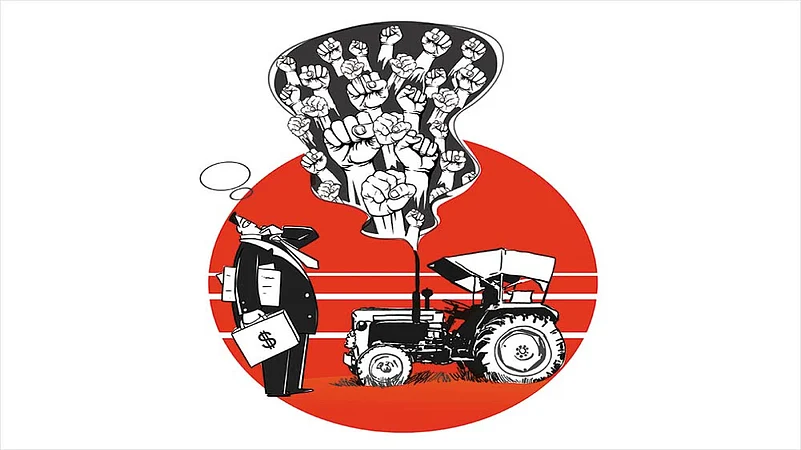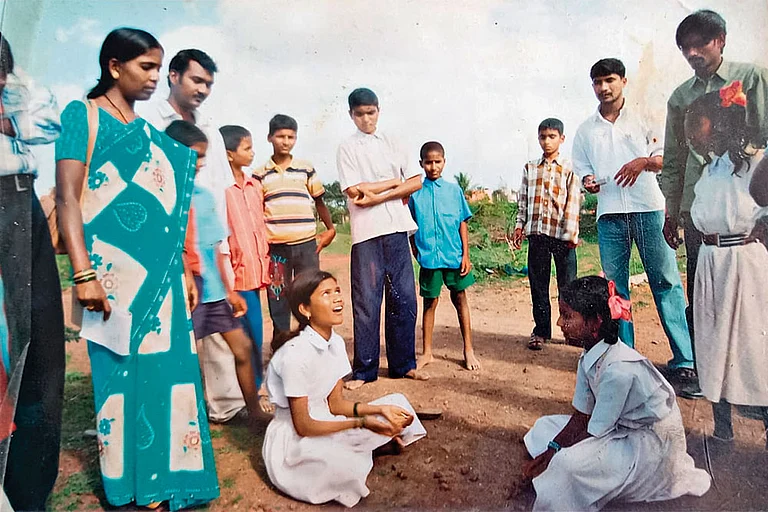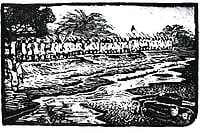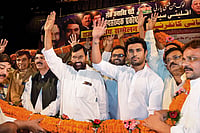The farmers’ agitation, like any other social movement, has its own text, context and sub-text. The text of agitation, quintessentially, is the protest against big corporate capital being proffered by the government, typically evident in the context of the three farm laws. Broadly, farmers see the announcement that these laws would be repealed in the ensuing winter session of Parliament as a pyrrhic victory—too little too late. After all, nearly 700 farmers died protesting. It is the sub-text that mystifies the fine print of agrarian reform, and where the movement’s discourse is embedded.
To put the text in perspective, let’s recall the three central farm laws. ‘The Farmers’ Produce Trade and Commerce (Promotion and Facilitation) Act, 2020’, ‘The Farmers’ (Empowerment and Protection) Agreement of Price Assurance, Farm Services Act, 2020’, and ‘The Essential Commodities (Amendment) Act, 2020’, were aimed at sun-setting the Minimum Support Price (MSP) regime through a new architecture of contract farming, bereft of any crop-price guarantee or clear dispute resolution mechanism. It also laid down a roadmap for hoarding and storage of some essential farm produce by private traders, mainly big corporates, which they were legally unable to do before. The so-called agrarian reforms by the Centre, predicated on these three enabling laws, were not only an indictment of federal principles as enshrined in the Constitution, but a recipe prepared for both national and global neo-liberal agenda. The laws marked the continuation of the National Agricultural Policy announced by the BJP-led NDA coalition on July 28, 2000, to industrialise and privatise the agrarian sector for export and trade-led growth. The debilitating implications of the policy shift, as perceived by the farmers, were, among others, the removal of price support and subsidies, complete dependence on the vagaries of market forces, absence of government control and accountability, and easier import/export of agricultural commodities within the larger framework of global trading systems in agriculture. In a nutshell, farmers saw these laws and policies as an instrument of land grab by corporates.
The three farm laws provided farmers fodder to textualise their protest. The current movement, perhaps the longest and biggest peasant struggle in the history of India, is led by Samyukt Kisan Morcha (SKM), which is a front of nearly 500 peasants and farmers organisations of the country, and represents a kind of ‘consociational movement’ of farmers. Consociational, because it is seen as the association of associations. The movement emerged as largely peaceful, secular, united and democratic, despite being labelled, quite often, as Khalistani, Pakistani, Chinese, Communist, Maoist and what not. It battled all crude vagaries of weather and state repression. The government had dug up and blocked the highway entries, to restrict farmers from marching on to Delhi’s Ram Lila ground, and used water cannons and lathis on more than one occasion to dismantle the protests. The movements’ communal harmony credentials were evident during all-religion prayers at protest sites. At a Muzaffarnagar rally, the largest of the movement, protesters reasserted their primary identity as farmers and exemplified themselves as a united democratic force, not to be divided on the basis of caste or religion. The participation of women in large numbers further strengthened the movement, which subsumed all ascriptive identities such as caste, gender and religion into a big consociational-class whole, essentially because it aimed to resist the penetration of big corporate capital into the precarities and vulnerabilities of class-caste divisions of agrarian social structure.
The sub-text of the movement, therefore, is what it uncovers—the possibilities of contesting and negotiating under this regime. Unlike other social movements, which also aim at civil-society reforms—for instance the feminist movement—this consociational-class movement of farmers targeted both national and global capital pushed by an authoritarian government through its agrarian policies. The laws were first promulgated as ordinances, and then, without much debate, taking advantage of the pandemic—passed hurriedly in an authoritarian manner.
Any discussion on the subtext of agrarian mobilisation must take into account the growing capitalist tendencies and class-differentiation in the agrarian economy, that unfolds fresh concerns and reshapes new agrarian structures and production relations. In the mid-60s, for instance, the issue of land redistribution, particularly the ‘land to the tiller’ demand, dissipated due to fresh anxieties caused by the Green Revolution. Rich farmers, benefitting from the technology-based change, mobilised the smaller peasantry using a region-caste-class enmeshing strategy. We may recall that the benefits of the Green Revolution were quite unevenly distributed, and how it exacerbated regional, caste and class inequalities. Farmers’ movements in the 70s and 80s were basically led by surplus-producing rich peasants and bullock capitalists—the prosperous ‘middle peasants’—who mobilised the peasantry through class-collaboration in the form of what was then dubbed as ‘New Farmers’ Movements’ and focused specifically on remunerative prices. Charan Singh, the towering leader of Bhartiya Kranti Dal (BKD), mobilised north India’s smaller peasantry classes and lower castes by using the ‘bhaichara’ of khaps, despite much of BKD being controlled by rich peasants and big landlords (in class terms) and Jats and OBCs (in caste terms). Enmeshing via class, caste and religion is the underlying theme of farmers’ movements, then and now.
ALSO READ: 'Hum Dekhenge': Times When India Protested
The history of farmers’ movements tells us that though efforts were made by the State to divide these along landlord and landless farmers, rich and poor peasants, and various ascriptive identities such as caste and religion—farmers have, more often than not, identified their goals and collectively rallied to achieve these. In recent times, we have seen that farmers, and in some case even tribals, unitedly resisting large-scale land acquisition by state governments at the behest of national and international capital. Farmers believe increasing state regulations and interventions in the agrarian economy through privatisation will negatively impact their livelihood, and there is, therefore, a clash between local farmers’ interests and that of domestic/global capital.
The ongoing farmers’ movement reaffirms that peasants are makers of their own rebellion and constitutive of their own political consciousness. We witnessed how the movement often got discredited, with peasants labelled as bhola bhala, docile, passive, and misled by shrewd, anti-national forces from outside the movement. Yet, it proved what political scientist Partha Chatterjee shows us—that peasants have ‘specific subjectivity’ of their own political consciousness related to the political processes in political society. The movement, with its partial victory, establishes the fact that for corporate capital to penetrate the hinterland economy, it needs to present a recipe that would outstrip the autonomy of post-colonial peasants’ political consciousness. At the moment, it seems to be a difficult task. Therein lay the strength of farmers’ movement.
(This appeared in the print edition as "The Hinterland Fortress")
(Views expressed are personal)
ALSO READ
Tanvir Aeijaz teaches public policy and politics at DU



























